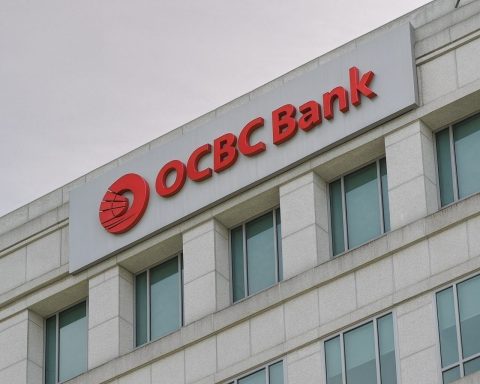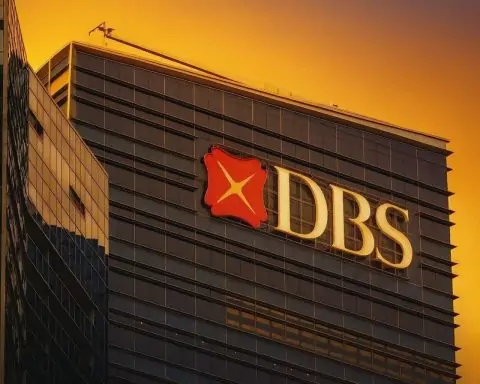Updated November 22, 2025
Chevron stock (NYSE: CVX) is treading water just below the $150 mark as investors digest record production, the completed Hess acquisition and fresh long‑term guidance from management. Here’s a breakdown of where things stand today and what that might mean for different types of investors.
Chevron stock today: price, range and yield
As of Friday’s close on November 21, 2025, Chevron finished the regular session at $149.98, down about 0.2% on the day, with after‑hours trading nudging the stock just above $150. [1]
Over the last 12 months, CVX has traded between $132.04 and $168.96, putting today’s price roughly 14% above its 52‑week low and about 11% below its high. [2]
On fundamentals:
- Market cap: about $300+ billion
- Trailing P/E ratio: roughly 19.3x earnings [3]
- Balance sheet:debt‑to‑equity around 0.16, with a current ratio near 1.0 — relatively conservative leverage for a supermajor. [4]
The dividend is a big part of the story:
- Quarterly dividend:$1.71 per share (annualised $6.84)
- Dividend yield: about 4.6% at the current price [5]
- Payout ratio: in the mid‑90% range on trailing earnings, elevated after a weaker earnings year. [6]
CVX went ex‑dividend on November 18, 2025, with the next dividend payment scheduled for December 10, 2025. [7]
Q3 2025: record output, softer year‑on‑year earnings
Chevron’s third‑quarter 2025 results are still the freshest hard data investors have:
- GAAP earnings: about $3.5 billion, down from roughly $4.5 billion a year earlier. [8]
- Adjusted earnings: around $3.6 billion or $1.85 per share, ahead of analyst expectations (consensus was closer to $1.68–$1.71). [9]
- Revenue: roughly $48–50 billion, slightly below last year but a touch above Wall Street estimates. [10]
The headline operational number was production:
- Record output of ~4.1 million barrels of oil equivalent per day (boe/d), up about 21% year‑on‑year, helped significantly by the Hess assets. [11]
- U.S. production rose particularly strongly, with notable growth from the Permian Basin and the Gulf of Mexico. [12]
Despite softer oil prices compared with last year, Chevron:
- Beat earnings expectations, thanks to higher volumes and stronger refining margins. [13]
- Generated nearly $10 billion in cash flow from operations and about $7 billion in adjusted free cash flow during the quarter. [14]
However, the mix of headwinds and tailwinds was clear:
- Upstream earnings (exploration and production) were pressured by lower crude prices.
- Downstream earnings (refining & chemicals) got a major boost from improved margins and lower costs, with some reports noting downstream profit nearly doubled year‑on‑year. [15]
In short: operations are firing on all cylinders, but the commodity backdrop has taken some shine off the headline profit growth.
Hess acquisition: long‑term growth, short‑term complexity
A huge piece of the Chevron story in 2025 is the Hess Corporation acquisition, which finally closed in July 2025 after a lengthy legal and regulatory saga.
- Chevron paid about $53–55 billion in an all‑stock deal to acquire Hess. [16]
- The prize asset is Hess’s 30% stake in the Stabroek block offshore Guyana, one of the most prolific new oil regions in decades, with more than 11 billion barrels of recoverable resources. [17]
- The deal also brings additional exposure to the U.S. Bakken shale and Southeast Asian gas assets. [18]
In the near term, the deal is a double‑edged sword:
- Chevron told investors to expect a $200–400 million drag on quarterly earnings in Q3 from Hess‑related costs and integration items. [19]
- At the same time, the newly acquired assets were expected to add about 450,000–500,000 boe/d to production versus Q2 levels. [20]
On the human side, Chevron is cutting overlapping roles:
- The company is laying off around 575 Hess employees in Houston, roughly 32% of that office, as part of its cost‑saving push. [21]
Hess integration is central to Chevron’s growth plan, but it comes with execution risk — from merging corporate cultures to delivering promised synergies.
2030 strategy: free‑cash‑flow growth, cost cuts and AI‑powered energy
At an Investor Day on November 12, 2025, Chevron laid out a refreshed long‑term roadmap:
- Targeting more than 10% annual growth in free cash flow through 2030, even in a moderate price environment.
- Planning 2–3% yearly production growth from its current base of ~4.1 million boe/d. [22]
- Increasing its cost‑reduction target to $3–4 billion by the end of 2026, up from earlier plans. [23]
- Trimming annual capital spending to around $18–21 billion while still funding key growth projects. [24]
One eye‑catching detail: Chevron plans to build its first AI‑focused data center powered by natural gas in West Texas, with a target start‑up in 2027, and is in talks with major tech names for potential partnerships. [25]
Management also told investors it expects to cover both capital expenditures and the dividend through 2030 even if Brent crude averages around $50 per barrel, leaning on efficiency gains, Hess synergies and selective divestments. [26]
Dividend, valuation and earnings outlook
From an income perspective, Chevron is behaving like a classic blue‑chip oil major:
- The 4.6% dividend yield is high compared with the broader market and competitive within the energy sector. [27]
- The reported payout ratio of about 96% of trailing earnings looks stretched, but part of that reflects a cyclical down‑step in EPS versus the 2022–2023 boom years. [28]
Consensus forecasts compiled by StockAnalysis suggest:
- 2025 EPS of about $7.38, down ~24% from 2024.
- 2026 EPS expected to rebound to around $8.17, implying roughly 11% growth. [29]
At the current price:
- CVX trades at around a high‑teens to ~20x forward earnings multiple, depending on which forecast you use — not a deep‑value level, but not extreme for a company leaning heavily on free‑cash‑flow growth and a large, long‑life asset base. [30]
For income‑focused investors, the key questions are:
- Can Chevron grow or at least maintain that ~4–5% yield without over‑leveraging the balance sheet?
- How quickly will Hess synergies and cost cuts flow through to the bottom line to bring the payout ratio back toward more conservative levels?
What Wall Street thinks about Chevron stock right now
Analyst sentiment is cautiously positive, and the exact tone depends on which data provider you look at:
- MarketBeat reports a consensus “Hold” rating from 23 brokerages (3 Sell, 9 Hold, 11 Buy), with an average 12‑month price target of $166.55. [31]
- StockAnalysis aggregates 17 analysts with an overall “Buy” rating and an average target of about $172.24, implying roughly 15% upside from Friday’s close. [32]
- Public.com shows a Buy consensus from 16 analysts, with a price target near $171.88. [33]
Across sources, the average Wall Street target clusters in the mid‑$160s to low‑$170s, suggesting mid‑teens potential upside if their assumptions play out. Of course, those estimates are not guarantees and update frequently with oil prices, macro news and company‑specific developments.
Insider and portfolio moves: what the “smart money” is doing
Recent filings highlight a few small but notable moves:
- On November 21, 2025, a Chevron vice president (Jeff B. Gustavson) filed a Form 144 to sell 9,325 shares of restricted stock. [34]
- On the same day, Director Dambisa F. Moyo reported gifting 662 shares, raising her total holdings to over 14,000 shares. [35]
Separately, some institutional investors have trimmed or added to positions, but there’s no single dominant trend — commonplace for a mega‑cap stock that sits in many diversified portfolios. [36]
Insider sales or gifts at this scale are small relative to Chevron’s overall float, so they’re typically viewed as routine personal portfolio management rather than a strong signal by themselves.
Key bullish arguments for Chevron stock
Investors who are constructive on CVX tend to focus on several themes:
- Scale plus low leverage
Chevron is one of the largest integrated energy companies globally, yet it carries relatively modest debt, giving it room to navigate downturns, fund the dividend and invest in growth projects. [37] - Record production and high‑quality reserves
The combination of legacy Chevron assets with Hess’s Guyana stake and Bakken portfolio has created a record production base with long‑duration, high‑margin barrels. [38] - Hess synergies and cost cuts
Management is targeting billions in cost savings and improved capital efficiency, expecting to grow free cash flow by more than 10% annually through 2030. [39] - Attractive total‑return profile
Between a ~4.6% dividend yield, ongoing share buybacks and mid‑teens implied upside to consensus price targets, some investors see a compelling total‑return opportunity if energy markets cooperate. [40] - Resilience at lower oil prices
Chevron says it can fund capex and dividends even if Brent averages around $50 per barrel, thanks to portfolio quality and efficiency gains. [41]
Key risks and reasons for caution
Skeptics, on the other hand, flag a number of concerns:
- Commodity price risk & potential oversupply
Both Exxon and Chevron are boosting output just as some forecasters warn of a potential oil surplus by 2026. A prolonged period of lower prices would squeeze earnings and could force Chevron to slow dividend growth or trim buybacks. [42] - Hess integration and execution risk
A $50‑plus‑billion deal is never simple. Chevron must deliver on synergies, cultural integration and safety performance while also executing layoffs and portfolio rationalisations. [43] - High current payout ratio
With a payout ratio hovering near 90–100% of trailing earnings, there is less margin for error if profits dip or integration costs run higher than expected. [44] - Energy transition and regulatory pressure
As a major fossil‑fuel producer, Chevron faces long‑term regulatory, legal and demand risks tied to decarbonisation and climate policy. This may impact future project approvals, capital costs and investor sentiment over time. [45] - Portfolio reshaping and asset sales
Chevron is actively reshuffling its global portfolio, including selling assets like a 50% stake in the MTJDA gas block via subsidiaries tied to former Hess holdings. While this can sharpen focus, it also adds another layer of project, political and execution risk. [46]
What to watch next for CVX
Looking beyond today’s quote, several catalysts and data points could move Chevron stock:
- Oil and gas prices: Any sharp move in Brent or Henry Hub will quickly feed through to sentiment on CVX.
- Further Hess integration updates: Investors will be watching how quickly production, cost synergies and earnings from Guyana and the Bakken ramp up. [47]
- Next earnings release (Q4 and full‑year 2025): Guidance for 2026 capex, buybacks and dividend policy will matter as much as the headline EPS number.
- Progress on AI data center and technology initiatives: These projects are relatively small in the context of Chevron’s size, but they show how the company is positioning itself in a more digital energy ecosystem. [48]
Bottom line: how Chevron stock may fit different investor profiles
Nothing here is personal investment advice, but viewed in broad strokes:
- Income‑oriented investors may be drawn to Chevron’s high yield and established dividend track record, while needing to be comfortable with commodity‑driven earnings swings.
- Total‑return investors who believe oil demand will remain robust and that management can execute on Hess integration and cost cuts may see mid‑teens upside plus the dividend as an attractive risk/reward profile.
- Risk‑averse or strongly ESG‑focused investors may prefer to keep Chevron as a small position or avoid it altogether, given the cyclicality of oil markets and the uncertainties around the energy transition.
Before making any decision about CVX, it’s important to consider your time horizon, risk tolerance, diversification needs and personal financial situation, and, if needed, to speak with a qualified financial advisor. Market conditions and company fundamentals can change quickly, and all investments involve the risk of loss.
References
1. stockanalysis.com, 2. www.marketbeat.com, 3. www.marketbeat.com, 4. www.marketbeat.com, 5. www.marketbeat.com, 6. www.marketbeat.com, 7. www.marketbeat.com, 8. www.chevron.com, 9. www.reuters.com, 10. www.reuters.com, 11. www.reuters.com, 12. www.reuters.com, 13. www.reuters.com, 14. www.reuters.com, 15. www.reuters.com, 16. www.reuters.com, 17. www.investopedia.com, 18. en.wikipedia.org, 19. www.reuters.com, 20. www.reuters.com, 21. www.reuters.com, 22. www.reuters.com, 23. www.reuters.com, 24. www.reuters.com, 25. www.reuters.com, 26. www.reuters.com, 27. www.marketbeat.com, 28. www.marketbeat.com, 29. stockanalysis.com, 30. stockanalysis.com, 31. www.marketbeat.com, 32. stockanalysis.com, 33. public.com, 34. www.tradingview.com, 35. www.tradingview.com, 36. www.marketbeat.com, 37. en.wikipedia.org, 38. www.reuters.com, 39. www.reuters.com, 40. www.marketbeat.com, 41. www.reuters.com, 42. www.ft.com, 43. www.reuters.com, 44. www.marketbeat.com, 45. en.wikipedia.org, 46. www.reuters.com, 47. www.reuters.com, 48. www.reuters.com







